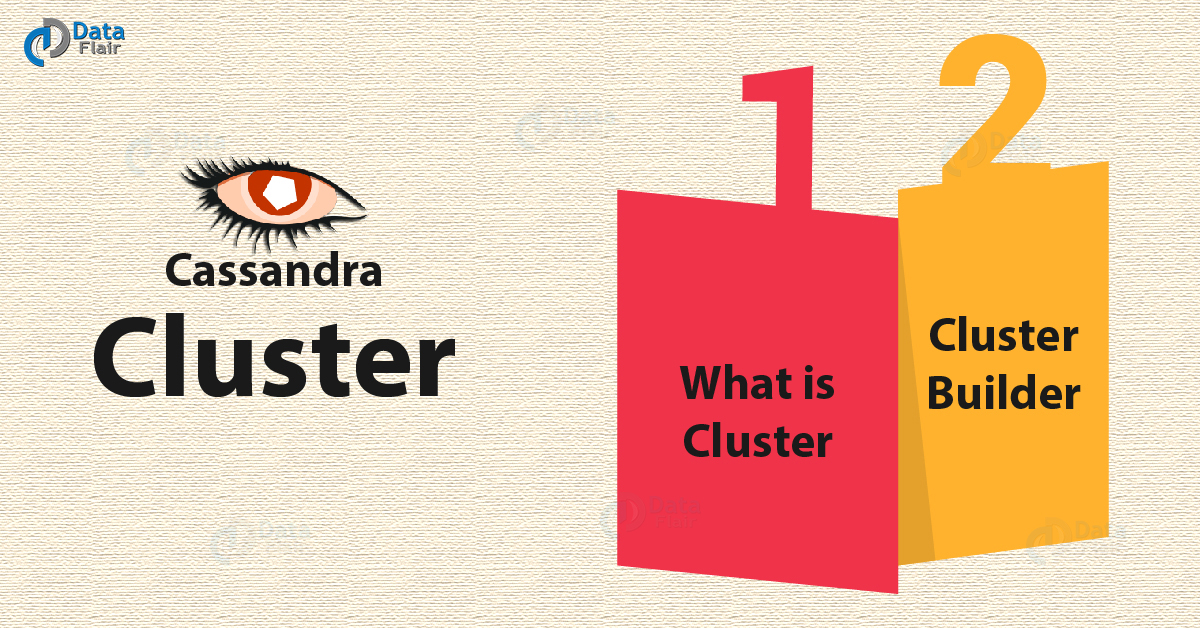What is Cassandra Cluster & Cluster Builder
FREE Online Courses: Elevate Your Skills, Zero Cost Attached - Enroll Now!
1. Cassandra Cluster
In this Cassandra tutorial, we will go through one of the main parts of the Cassandra database i.e. Cassandra Cluster. Moreover, we will see the meaning of Cluster and different layers in Cluster. This article will guide through the parts of the cluster and the builders associated with it.
So, let’s start Cassandra Cluster.
Test Your Cassandra Knowledge in just 3 minutes
2. What is Cluster?
The cluster is a collection of nodes that represents a single system. A cluster in Cassandra is one of the shells in the whole Cassandra database. Many Cassandra Clusters combine together to form the database in Cassandra.
A Cluster is basically the outermost shell or storage unit in a database. The Cassandra Cluster contains many different layers of storage units. Each layer contains the other.
Let’s Explore Cassandra Applications
The following are different layers in a Cassandra Cluster:
a. Node Cluster
Node is the second layer in a cluster. This layer basically comprises of systems or computers or storage units. Each cluster may contain many nodes or systems. These systems or nodes are connected together.
They collectively share data through the replication in Cassandra and independently as well. The replication factor in the nodes allows the user to have a redundancy for the data stored.
b. Keyspace
The keyspace is the next layer of the storage. In a node, there are many keyspaces. These keyspaces are basically the outermost storage unit in a system. They contain the main data. The data distributed according to their properties or areas.
Let’s revise Cassandra API
c. Column Families
The next layer is the column families. The keyspace is further divided into column families. These column families have different areas or headings under which the data is distributed. In a keyspace, these column families are categorized into different headings or titles.
These titles further contain different layers of storage units. These column families can also be characterized by tables. The column families differ from the tables through their APIs.
d. Rows
The next layer in the database is of the Rows as according to column families. The Rows are basically the classification under which the column family is divided. These classifications, in turn, create specific distribution criteria for the entries.
Let’s discuss Cassandra Architecture.
e. Column
This is the innermost layer in a database. The column basically is divided into different titles or headings. These headings contain the main data regarding the specific entry.
3. Cluster Builder
The cluster is the main entrance for the data into the database. The driver of this belongs to com.datastax.driver.core package. Using a set of commands user can initiate the Cluster Builder. This allows the user to perform various detailed operations while building a cluster.
The Cassandra Cluster Builder is basically an interface that holds connections to the clusters. This is also helpful to execute CQL queries and statements.
Different commands and methods are used to perform various operations in Cassandra Cluster Builder.
Have a look at Cassandra Data Types
- Session connect(): It allows the user to create a new session on the cluster. Apart from this it initializes the new session.
- void close(): It allows the user to close the cluster session instance.
- static Cluster.Builder builder(): It allows the user to create a new Cluster.Builder instance.
- Cluster.Builder addContactPoint(): This allows the user to add a contact point a cluster.
- Cluster build(): This command allows the user to build a cluster with the given or default contact points.
- ResultSet execute(): This allows the user to execute a query. The query may contain a statement object or it may be a string object.
- PreparedStatement prepare(): This allows the user to prepare a provided query. This query can be provided either in the form of a statement or a string.
Read Data Definition Command – Cassandra Query Language
So, this was all about Cassandra Clustering. Hope you like our explanation.
4. Conclusion
Hence, in this Cassandra Cluster tutorial, we went through Cassandra Cluster. Moreover, we saw different layers in Cluster that are a node, keyspace, column families, rows, and column. Also, we discussed the Cluster Builder.
Next, we will see Cassandra quiz. The quiz will allow you to test your knowledge that you gained through these articles. Still, if any doubt, ask in the comment tab.
See also –
9 Cassandra Shell Commands – You Must Know
For reference
Your opinion matters
Please write your valuable feedback about DataFlair on Google




This part of the tutorial needs more visual. It would be good to provide pictorial view with some real data is structured in column family, rows , columns , keyspace..how a title looks like…u got it i mean